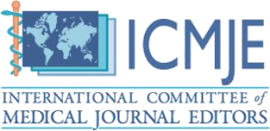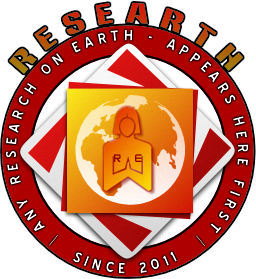AFTER THE DELUGE: AN ACTION NOTEBOOK FOR A RESPONSIBLE SOCIOLINGUIST
DOI:
https://doi.org/10.51611/iars.irj.v11i1.2021.155Keywords:
Sociolinguistics, COVID-19, Pandemic, Ethnic Languages, Mother Tongues, Linguistic EndangermentAbstract
In this paper, we begin with inevitability and cyclicity of pandemic during the last two centuries. The problems seem to be coming back to us again and again through Small-pox, Tuberculosis, Plague, Influenza, HIV/AIDS, Ebola, and now COVID-19. The 2003 Severe Acute Respiratory Syndrome (SARS) pandemic and the Avian Influenza resulted in establishment of WHO protocols and awareness. However, as we consider the people at the Bottom of the Pyramid in developing and poor countries, the problem of survival of ethnic groups and their languages appear to be more acute. We know that 96% of India’s mother-tongues are spoken by only 4% of the population. But as India houses 3592 numerically weak mother tongues (spoken by 705 tribes or ethnic groups and 1284 castes scattered all over our rural landscape), with high degree of poverty combined with social hierarchies based on caste, religion and ethnicity, the shape of our population pyramid is relatively flat and bulging at the bottom making the problem of the survival of mother-tongues and learning in other-tongues complex. Our problem is that these ethnic groups and speakers of indigenous languages are fast losing their grip over their respective mother-tongues as they have to survive in an urban cauldron. It is this group that faced/faces the COVID-19 crisis more than anyone else, and it is this group that was seen walking back from urban centres to their villages. But those who stayed back in villages are also vulnerable to the pandemic. The effect of COVID-19 on our indigenous groups could be dangerous. After defining and describing ‘Danger’, we argue that the creativity of these indigenous language speakers is facing a grave threat. This is not only a matter of survival or production, but also an issue of printing, publishing, being read, translated, and sold. After discussing a few theoretical positions, from Ethnologue to Fishman and others, a list of tasks of Responsible Sociolinguistics is enlisted here. Then a detailed comparison is held between Biological and Linguistic Endangerment. What lessons could be learned by sociolinguists and language planners is discussed. The kind of tensions existing as real threat to survival are discussed in terms of systems theory and power-conflict theory. We argue that Linguistics should be used for healing of the wounds and injured pride of the smaller speech groups.
Downloads
References
Aickelin, Uwe & Steve Cayzer. The Danger Theory and its applications to Artificial ImmuneSystem. Retrieved from: SSRN: https://ssrn.com/abstract=2832054 or http://dx.doi.org/10.2139/ssrn.2832054. (2002).
Dorian, Nancy. ‘Western language ideologies small-language prospects’ (Ed by Leonore A. Grenoble). Cambridge University Press. (1998).
Matzinger, P. ‘Tolerance, Danger and the Extended Family’. Annual Review of Immunology, 12: 991-1045. (1994).
McKie, Robin. ‘Scientists trace 2002 virus to colony of cave-dwelling bats in China.’ The Guardian, ISSN 0029-7712. (2017). Archived from the original in 2017. Retrieved 8th July 2020.
Millar, Gladys. Warangu Picture Dictionary. [In association with Wanda Miller & Paul Monaghan,] Trove, University of Adelaide. School of Humanities, Linguistics Discipline. (2005).
Moore, Jazmyn T.; Jessica N. Ricaldi; Charles E. Rose; Jennifer Fuld et al.. Disparities in Incidence of COVID-19 among underrepresented Racial/Ethnic Groups in Counties Identified as Hotspots During June 5-18, 2020 – 22 States, February-June 2020. Centre for Disease Control and Prevention (CDC): An Online MMWR Morb Weekly Report, Early Release. DOI: http://dx.doi.org/10.15585/mmwr.mm6933e1external icon. (2020).
Ostler, Nicholas. Empires of the Word: a language history of the world. Harper Perennial. (2005).
Pattanayak, D.P.. ‘On being and becoming bilingual in India’, in Joshua Fishman, ed. The Fergusonian Impact: Sociolinguistics and the Sociology of Language, Berlin: Mouton. 43-56. (1986).
Schermerhorn. Comparative Ethnic Relations A Framework for Theory and Research. Random House. (1970).
Singh, Udaya Narayana (with Rajib Chakraborty, Bidisha Bhattacharjee & Arimardan Kumar Tripathy. Languages and Cultures on the Margin: Guidelines for Fieldwork on Endangered Languages. Centre for Endangered Languages, Visva-Bharati. (2018).
Singh, Udaya Narayana. ‘Status of lesser-known languages of India’. In Anju Saxena & lars Borin, eds. Lesser-Known Languages in South Asia : Status and Policies, Case Studies and Applications of Information Technology. Mouton de Gruyter. (2009).
Singh, Udaya Narayana. ‘Manifesto of the Unwritten World: The Curse of Dialects.’ In Anvita Abbi, ed. Unwritten Languages of India. New Delhi: Sahitya Akademi. 106-116. (2017a).
Singh, Udaya Narayana. ‘View from Below: Utopia and Change’. (Jointly with Rajarshi Singh) In Atul Thakur, ed. India Now and In Transition. New Delhi: Niyogi Books. 409-22. (2017b).
Downloads
Published
Issue
Section
License
Copyright (c) 2021 Udaya Narayana Singh

This work is licensed under a Creative Commons Attribution 4.0 International License.
Author(s) hold complete right on the content of this article. Copyright to the content are governed as per Copyright Policy of the Journal.





















